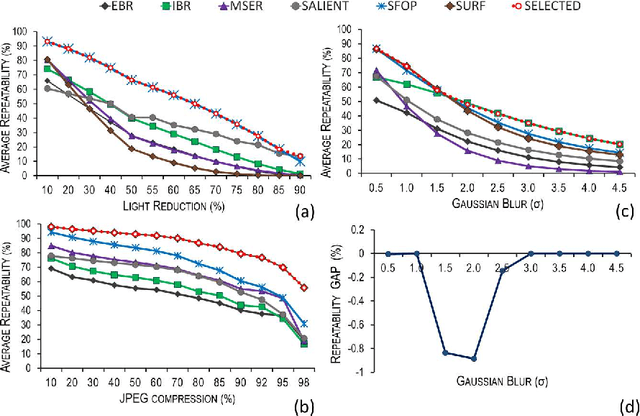Automatic Selection of the Optimal Local Feature Detector
Paper and Code
May 19, 2016

A large number of different feature detectors has been proposed so far. Any existing approach presents strengths and weaknesses, which make a detector optimal only for a limited range of applications. A tool capable of selecting the optimal feature detector in relation to the operating conditions is presented in this paper. The input images are quickly analyzed to determine what type of image transformation is applied to them and at which amount. Finally, the detector that is expected to obtain the highest repeatability under such conditions, is chosen to extract features from the input images. The efficiency and the good accuracy in determining the optimal feature detector for any operating condition, make the proposed tool suitable to be utilized in real visual applications. %A large number of different feature detectors has been proposed so far. Any existing approach presents strengths and weaknesses, which make a detector optimal only for a limited range of applications. A large number of different local feature detectors have been proposed in the last few years. However, each feature detector has its own strengths ad weaknesses that limit its use to a specific range of applications. In this paper is presented a tool capable of quickly analysing input images to determine which type and amount of transformation is applied to them and then selecting the optimal feature detector, which is expected to perform the best. The results show that the performance and the fast execution time render the proposed tool suitable for real-world vision applications.
 Add to Chrome
Add to Chrome Add to Firefox
Add to Firefox Add to Edge
Add to Edge